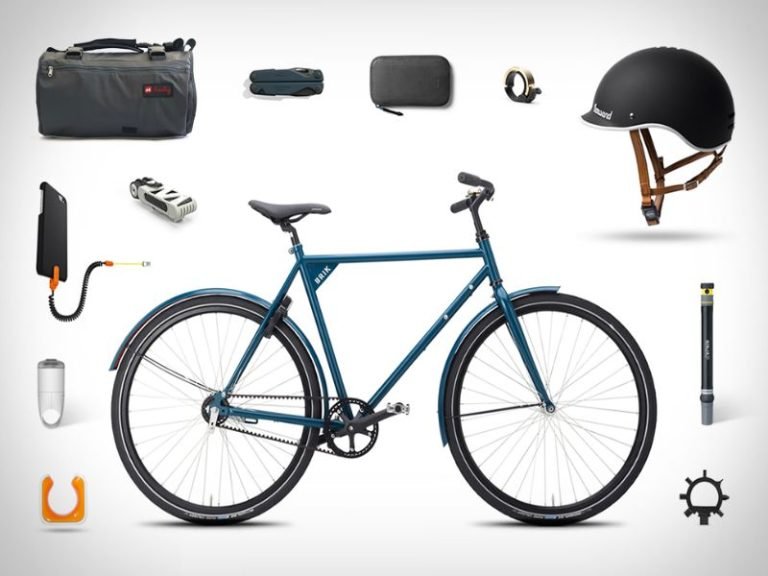How Dangerous is Mountain Biking
Is mountain biking as risky as it seems? Explore the facts about how dangerous is mountain biking or can be. Learn about safety measures and precautions to enjoy this exhilarating sport responsibly.
Mountain biking is an exhilarating outdoor recreational activity that involves riding specially designed bicycles, often with rugged tires and durable frames, on off-road trails.
These trails can range from mild to extremely challenging, featuring various terrains such as steep descents, rocky paths, and dense forests.
Mountain biking enthusiasts, known as riders or bikers, embrace the sport for its adrenaline rush, connection with nature, and physical fitness benefits.
Growing Popularity of Mountain Biking
In recent years, mountain biking has experienced a surge in popularity across the globe. This surge can be attributed to several factors, including a heightened appreciation for outdoor activities, an increased focus on health and fitness, and the accessibility of mountain biking trails.
Many regions have recognized the economic benefits of promoting mountain biking tourism, leading to the development of extensive trail networks and bike parks.
How Dangerous is Mountain Biking
While mountain biking offers a host of rewards, it is essential to address the inherent dangers associated with this sport.
This post aims to shed light on the risks involved in mountain biking, with the goal of raising awareness and encouraging responsible riding.
By understanding these dangers and taking appropriate precautions, riders can continue to enjoy this thrilling activity while minimizing the potential for accidents and injuries.
Statistics and Trends
Mountain Biking Accidents
Injury Rates
Mountain biking is not without its risks. According to data from healthcare institutions and sports organizations, there is a significant incidence of injuries among mountain bikers. These injuries can range from minor scrapes and bruises to severe fractures and head injuries.
Fatality Rates
While fatalities in mountain biking are relatively rare, they do occur, often as a result of high-speed crashes or accidents on particularly challenging trails. These tragic incidents underscore the importance of taking safety precautions seriously.
Comparison with Other Recreational Activities
To put the dangers of mountain biking in context, it’s important to compare it with other recreational activities.
While mountain biking does have its risks, it may not be inherently more dangerous than activities like skiing, snowboarding, or even traditional road cycling.
Understanding these comparisons can help riders make informed choices about their preferred activities.
Recent Trends in Mountain Biking Accidents
Over the years, there has been a shift in the types of accidents and injuries reported in mountain biking.
Understanding these trends, such as the influence of advanced bike technology and changes in trail design, can provide valuable insights into how the sport is evolving and where potential risks lie.
Factors Contributing to Danger
Terrain and Trail Conditions
Technical Difficulty
Mountain biking trails vary widely in terms of technical difficulty. Some are relatively smooth and gentle, while others are filled with obstacles, drops, and challenging features.
The technical difficulty of a trail significantly affects the level of risk involved in riding it.
Weather Conditions
Weather can be unpredictable, especially in mountainous regions. Rain, snow, and even strong winds can impact trail conditions, making them more treacherous and increasing the likelihood of accidents.
Rider Experience and Skill Level
Novice vs. Experienced Riders
Rider experience and skill level play a crucial role in determining the level of danger in mountain biking.
Novice riders are more likely to struggle with challenging trails and may lack the confidence and control needed to navigate difficult terrain safely.
Training and Education
Proper training and education can significantly mitigate the risks associated with mountain biking.
Riders who understand techniques for handling obstacles, braking, and cornering are better equipped to tackle difficult trails safely.
Equipment and Maintenance
Bike Quality and Maintenance
The quality of the mountain bike and its maintenance are fundamental to safety. A well-maintained bike with appropriate features and components is less likely to malfunction on the trail, reducing the risk of accidents.
Safety Gears
Safety gear, including helmets, knee and elbow pads, gloves, and body armor, is essential for protecting riders from injuries. Wearing the right safety gear can make a substantial difference in the outcome of an accident.
Types of Injuries
Common Injuries in Mountain Biking
Fractures and Sprains
Fractures and sprains are among the most common injuries in mountain biking. The uneven terrain and high speeds can lead to falls that result in broken bones or sprained joints.
Head Injuries
Head injuries are a significant concern in mountain biking, highlighting the importance of wearing a helmet. Even a minor head injury can have severe consequences.
Soft Tissue Injuries
Soft tissue injuries, such as cuts, abrasions, and contusions, are frequent in mountain biking due to contact with trail features, vegetation, or the ground.
Severity of Injuries
Minor vs. Life-Threatening Injuries
It’s crucial to understand that not all mountain biking injuries are equal in severity. While some may be minor and result in a quick recovery, others can be life-threatening or cause long-term physical impairment.
Long-Term Consequences
Long-term consequences of mountain biking injuries can include chronic pain, reduced mobility, and psychological trauma. These factors emphasize the importance of taking safety precautions seriously.
Risk Mitigation
Importance of Safety Measures
Helmet Use
One of the most critical safety measures in mountain biking is wearing a helmet. Helmets protect the head and brain, reducing the risk of severe head injuries.
Protective Gear
In addition to helmets, riders should invest in protective gear like knee and elbow pads, gloves, and body armor. This gear can help minimize the impact of falls and collisions.
Trail Management and Maintenance
Trail Design and Signage
Well-designed trails with appropriate signage can guide riders and help them anticipate potential hazards. Proper trail maintenance is also essential to keep trails safe and enjoyable.
Environmental Impact
Responsible trail management not only enhances safety but also minimizes the environmental impact of mountain biking. Sustainability and conservation efforts play a crucial role in preserving natural landscapes.
Rider Responsibility
Abiding by Trail Rules
Adhering to trail rules and regulations is a fundamental aspect of responsible mountain biking. Respect for other trail users, yielding the right of way, and following posted guidelines contribute to a safer riding experience.
Riding Within One’s Limits
Perhaps the most important aspect of rider responsibility is recognizing personal limits. Riders should avoid attempting trails or features beyond their skill level, as this can lead to accidents and injuries.
The Role of Education and Awareness
Mountain Biking Organizations and Safety Initiatives
Many mountain biking organizations and communities are dedicated to promoting safety and responsible riding.
Essential Biking Gear for Rainy Days
These organizations offer resources, training programs, and safety initiatives to educate riders about the sport’s risks and best practices.
Public Awareness Campaigns
Public awareness campaigns play a crucial role in disseminating information about mountain biking safety.
These campaigns often focus on helmet use, sharing the trail with others, and the importance of responsible behavior on the trails.
Promoting Responsible Riding
Promoting responsible riding should be a collective effort within the mountain biking community. Encouraging riders to prioritize safety, share knowledge, and mentor less experienced riders can contribute to a safer and more enjoyable sport.
In conclusion, mountain biking offers numerous rewards but also comes with inherent dangers. Understanding these dangers, including the risk of injuries and accidents, is essential for all riders.
The key takeaway is that responsible riding and safety measures can significantly reduce these risks.
Riders must prioritize their safety and the safety of others by wearing appropriate gear, abiding by trail rules, and continuously improving their skills.
Despite the dangers, mountain biking remains a thrilling and fulfilling outdoor activity.
By respecting the environment, sharing the trails, and taking precautions, riders can continue to enjoy the sport while minimizing risks to themselves and the natural landscapes they traverse.







